#ishii hideaki
Explore tagged Tumblr posts
Text
Hazuki Izumi (Reno Komine) stands on the edge of a rooftop looking out at the city beneath her. A clutter of competing architecture styles and buildings at various points of development: scaffolding, newly-built, maturing, declining, abandoned, condemned. Traffic lights glow, cars drone, and roads curve. A web of powerlines connects every part of the city. Hazuki is deep in thought, contemplating something or other, almost as if she’s listening to something we can’t quite hear. Her friend Mao (Shinsuke Aoki) notices the rooftop figure and approaches her as he becomes concerned that she might jump.
This scene takes place in August in the Water (1995) but variations of it can be found in a number of Japanese films and anime of the late 1990s to early 2000s. At the time of release these films and series belonged to different genres and production cycles yet retrospectively we can identify a fascinating pattern of imagery, themes, characters and even locations that recur to form an enigmatic genre called denpa. Little has been written about it in English, so allow me to venture forward.
‘Denpa’ is a Japanese word that means electromagnetic wave or radio wave. Within the genre, characters tune into these waves and feel their effects: they sense things, hear voices and see spectres, indeed the stories of Chiaki J. Konaka begin this way, including his Lovecraft-inspired psychological horror Serial Experiments Lain (1998) and Marebito (2004). The characters are susceptible to the waves due to alienation caused by their oppressive surroundings which is depicted through a distinct, industrial aesthetic: antennas, chain link fences, telephone poles, a web of powerlines across the sky, trains, manholes and sewers, grainy and distorted footage, a muted colour palette. This imagery reoccurs across denpa fiction, from the visionary anime of Satoshi Kon (Perfect Blue 1997, Paranoia Agent 2004) to the live-action poetry Shunji Iwai crafts out of adolescent cruelty (Picnic 1996, All About Lily Chou-Chou, 2001).
These bleak,alienated urban settings raise questions of tradition vs modernisation, mass-communication and a critical look at new technologies. Denpa situates these themes amongst references to folklore and the paranormal such as ESP, hauntings, aliens and spirits a combination explored by both the cult horror favourite Boogiepop Phantom (2000) and influential franchise starter Ring (1998). These supernatural beings are known to inhabit different realms and through electromagnetic waves these beings can cross over to our world, and humans can cross over to their worlds. The blurred lines between these spaces are illustrated with surreal imagery and experimental filmmaking. Such creative innovation can be found in the surreal psychological torment of Hideaki Anno (Neon Genesis Evangelion 1995-7, Love & Pop 1998, Ritual 2000) and in the breath-taking urban dreamscapes woven by Gakuryu Ishii (August in The Water, 1993’s Tokyo Blood). Within this cocktail of urban alienation and supernatural forces are plot points such as rumours, conspiracy, mental illness, and delusion often with cosmic and apocalyptic consequences, best embodied by the hypnotic horror of Kiyoshi Kurosawa (Cure 1997, Pulse 2001).
So far, denpa has only appeared as a loosely defined genre label on English-language databases for anime and videogames, on the occasional blog post, a handful of letterboxd lists and one lone essay [1]. It is at once both recognisable yet hard to define. I understand it on an emotional level, I can identify it as a vibe, yet I want to tease out the details and define it in more concrete terms: what makes something ‘denpa’?
The genre derives from ‘denpa-san’ or ‘denpa-kei’ a name for a type of person that emerged in the late 20th century. Think of denpa-san as analogous to ‘tin foil hatter’ – someone vulnerable to paranoia, conspiracy theories and delusions hoping that the foil will block out those invasive electromagnetic waves. Or maybe they’re already at their mercy, following instructions heard via the waves and doing unsavoury or even dangerous things. The term initially hit the mainstream consciousness in association with the 1981 ‘Fukugawa Street Murders’ where a 29-year-old man indiscriminately stabbed passers-by, killing several people and injuring more. The highly-publicised trial hinged on the controversial defence of insanity: the perpetrator argued that they were driven to murder after years of torment from electromagnetic waves [2]. Over time the term expanded to become associated with creepy, unpopular people in general, those on the fringes of society with unusual quirks and obsessions.
It is here that the term overlaps with another: ‘otaku’. A social outcast who obsesses over a hobby to the detriment of their social life. Think ‘geek’ but usually uttered with more contempt. Otaku is typically associated with anime, but contrary to popular belief can be about many subjects from videogames to cars. What ties them together is the negative effect it has on the self. Much like denpa, the term otaku gained traction in association with a horrific crime; in the 1990s it was elevated from merely a pejorative label to the centre of a moral panic in relation to the years-long trial of a serial killer nicknamed by the media as ‘the otaku killer’ for his extensive video collection of pornography and horror films [3]. In the years since, the collective otaku have shaken off the worst of these associations and become a phenomenon as they developed a distinct culture and became a major economic force that has been embraced by the media they obsess over. On the darker end of the subculture some favour the fantasy world of their hobby over the real world and get lost in it, which in itself has become a common denpa narrative with an iconic example being the idol otaku in Perfect Blue.
Critics ascribe the emergence of denpa-san and otaku to society at the time. The Japanese economic bubble burst in 1991 and the decade that followed became known as ‘The Lost Decade’. The population faced a recession which stunted young people as they came of working age. And yet Japan was known on the global stage to be at the forefront of home electronics and new technology. This was in tension with traditions of the past and complicated their national identity as new cultural connotations outpaced traditional ones posing the question: can an old culture survive as a new one emerges?
The development of these new technologies also introduced new issues as they quickly became part of everyday life. Camcorders in every hand, phones in every pocket, so easy to use that soon everyone had one without knowing how they really worked. Life was changing as there was now constant recording, growing access and intimate conversations were now held not in person but via phones and on internet forums. As people became increasingly reliant on these technologies, people began to wonder, what is the existential cost of these new conveniences?
From moral-panics and national identity crises to new technologies denpa fiction responds to this new cultural landscape.
The war between tradition and modernization often forms the backdrop of denpa fiction in urban spaces where a dedicated few keep old customs alive, while others push on for progress. Gakuryu Ishii (previously known as Sogo Ishii) depicts the tension of this conflict well in August in the Water where participants of the centuries-old festival in Hakata pulse through the city in historical costumes with traditional matsuri floats surrounded by modern buildings and stopped traffic; Ishii finds strange beauty in the cityscapes that engulf and imprison his characters. Investigations lead Detective Takabe (Koji Yakusho) in Cure to abandoned buildings and disused factories which signal the failure of a once-promising industry. In Love & Pop and Tokyo Blood, supporting characters are construction workers who signify this changing landscape as they meet on noisy building sites that are the eyesore we must endure for another dubious future.
The rooftop is a recurring location for these films. It can be a place for a clandestine conversation with a confidante, or a place for solo contemplation. The sight of a lone person on a rooftop can be startling to passers-by: the threat of suicide looms and in denpa often does happen. Cinematographically speaking it’s an opportunity to view an urban vista: the buildings, antennas and powerlines that populate the skyline. Again and again characters are drawn to the rooftop where they can get the clearest signal to the electromagnetic waves that mesmerise and influence them.
Alternatively, the clearest signal can be found by going right to the source. In Serial Experiments Lain we meet Lain’s father (Ryusuke Obayashi) at his impressive 6 monitor desktop and over the course of the series Lain’s (Kaori Shimizu) simple computer set-up evolves to be larger and larger. A soundscape is built from keyboard tapping, mouse clicking and monitors gently beeping. Denpa characters are often found hunched over a desk or workstation in the dark, the only light source being the glow of a screen or the small bulbs of a switchboard that gently whir as a pen scratches while detailed notes are being made. It’s an image with unhealthy connotations indicating obsession and someone losing touch with the outside world. In Boogiepop Phantom, the deskbound character is a videogame otaku finding solace in a fictional fantasy world. In Cure they’re a detective and in Ring a journalist whose respective investigations turn fanatical as they uncover disturbing histories. In each instance the foundations of their worldview will soon be shaken and their mental health questioned as conspiracies and paranormal explanations become more and more likely. Are the characters’ paranoid, or are they seeing things clearly for the first time?
These paranoid thoughts or deteriorating mental states are often heard through voice-over narration. Depending on the film the voice-over could be the trademark psychological introspection of Neon Genesis Evangelion, or the expansive philosophical musings of August in the Water or even the sinister and somewhat incoherent rambling of Marebito. Though superficially different, what they share is a painfully personal and poetic type of soliloquy.
Alongside narration, different psychological states are expressed through surreal imagery and experimental filmmaking, which often leads to a striking use of mixed-media with live-action moments in anime. In Boogiepop Phantom, a drug-addled videogame otaku experiences visions which are depicted by heavily edited live-action footage in a break from the traditional animation of the series. In Serial Experiments Lain there are animated character figures over live-action backgrounds which has the uncanny effect of blurring the lines between the different worlds that Lain traverses. In the case of Neon Genesis Evangelion: End of Evangelion, the sequence of live-action footage breaks the diegetic barrier between the text and audience, seeming to directly address not only the delusions of its’ characters but its own otaku fandom.
This subtle sense of self-awareness can be seen in the eerie experience of watching characters watching screens. Frames within frames or looking at a picture within a picture, voyeurism becomes infinite. New technologies allow people to see people through a thick glass lens or a pixelated screen. Distant yet paradoxically seeing each other more intimately than ever. In Perfect Blue this newfound intimacy fuels the obsessions and delusions of both Mima and her otaku fan.
The spectre of denpa is not limited to Japan. The same themes and same motifs can be found in English-language films from around the same time. There is Donnie Darko (2001), Richard Kelly’s film about a schizophrenic teenager who is told to commit crimes by a phantom in a rabbit suit and whose survival of a near-death-experience has apocalyptic consequences. You can find denpa in the films of M. Night Shyamalan: from the delusion of Bruce Willis in The Sixth Sense (1999), to the haunting image of mass rooftop suicides in The Happening (2008) and to the potent mix of aliens and religion in Signs (2002). Even in the music video of Eminem’s Stan (2000)– in which a disturbed otaku hunches over a desk under a perpetual raincloud. When I recognise denpa motifs in films made outside Japan, I begin to think of denpa less as a genre and more as a zeitgeist. A restless, nihilistic gen x moan of exasperation. That feeling of living in The Matrix (1999); groaning at the end of the century and looking to the new one with only pessimism. Yes, there are new technologies but there are as many negative possible outcomes as there are positive ones. It seems inevitable that people will succumb to their worst impulses.
28 notes
·
View notes
Text
NJPW Match Card Set for June 17 + Match Predictions for NOAH's Green Journey in Nagoya 2023
Earlier today, NJPW announced match cards for their televised events in Chiba (for June 10th and 18th) and Hachioji (for June 17th). Down below is the official match card for their June 17th which is part of their "New Japan Road: Road to Strong" tour which starts in Chiba on June 10th. There will be a total of 8 matches on the card 4 of them are pictured down below:
Opening Match: Kosei Fujita vs. Master Wato
Match #2: Yuto Nakashima and Ryusuke Taguchi vs. Boltin Oleg and Tomoaki Honma
Match #3: EVIL, SHO, Yujiro Takahashi, and Dick Togo vs. Hirooki Goto, Togi Makabe, Toru Yano, and Hiroyoshi Tenzan
Match #4: Dan Moloney, Clark Connors, and Gedo vs. Great O-Khan, TJP, and Francesco Akira

Match #5: Alex Coughlin and Gabriel Kidd vs. Oskar Leube and YOSHI-HASHI
Match #6: Shota Umino, Ren Narita, El Desperado, and Tiger Mask vs. Kazuchika Okada, Hiroshi Tanahashi, Tomohiro Ishii, and YOH
Semi-main Event: Tetsuya Naito, Shingo Takagi, and BUSHI vs. Taka Michinoku, Yoshinobu Kanemaru, and Taichi
Main Event: Yota Tsuji and Hiromu Takahashi vs. SANADA and DOUKI
"New Japan Road: Road to the Strong" in Hachioji airs on NJPW World at 6 PM Local Time/5 AM Eastern/4 AM Central/2 AM Pacific.
But before that, we will have Pro Wrestling NOAH's "Green Journey in Nagoya 2023" which will air on ABEMA and Wrestle Universe at 5 PM Local Time/4 AM Eastern/3 AM Central/1 AM Pacific on the same day as "New Japan Road" in Hachioji in which right now I will give you my full match predictions for the NOAH event as promised when the match card was officially announced last week.

Opening Match Prediction: I can understand that Hiroki wants to prove himself but by leaving Kongo, he has left a big hole. Already knowing he'll lose to Kenoh, losing to Hajime Ohara is not a option but...with the way he's been going, can't see him beating Ohara. Hajime Ohara will win the opening match.
Match #2 Prediction: This match is very intriguing but if I'm to pick a side then I'm going with the team of Mohammed Yone, Super Crazy, and Alejandro for the win.
Match #3 Prediction: Apparently Hideaki Suzuki is not happy about this match and based on how he is. I'm expecting this singles bout against Shuhei Taniguchi to be a brawl. Hideaki Suzuki will dominate and win in easy fashion.
Match #4 Prediction: When this match was originally announced, I thought that this would be used to determine Hijo del Dr. Wagner's next challenger for the GHC National Championship. But with Kaito Kiyomiya's participation in the G1 announced, this is his chance to show his 7 block opponents (which will be announced on June 10th) what he's made of. I still see Kiyomiya winning and at the same time make a statement as G1 Climax 33 looms for him.
Match #5 Prediction: This is no typo everyone, Naomichi Marufuji is actually teaming up with Eita against Daiki Inaba and Atsushi Kotoge in which I see the crumbling of Kotoge continue. Eita and Marufuji with the surprise victory.
Match #6 Prediction: Welcome back Jack Morris, we missed you. GLG vs. Stinger and Sean Legacy is sure going to be something. My prediction on this match will be very interesting for I have Stinger and Legacy continuing that momentum they've been having since May 4th in Ryogoku. Stinger and Sean Legacy with the win.
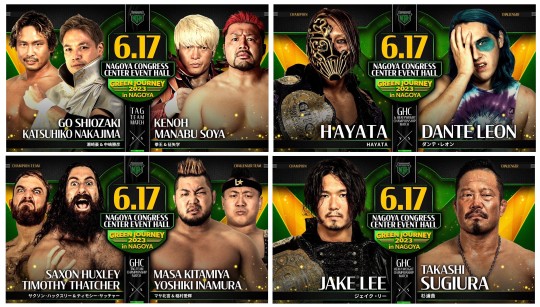
Match #7 Prediction: A rematch from May 14th and a preview match for June 22nd all in one match. AXIZ returned on May 14th in a losing effort as Go Shiozaki was pinned by Kenoh in the main event. Since that loss, AXIZ has won their next two matches and it is expected by the time they get to Nagoya they will be 4-1 since reuniting. My prediction is that AXIZ will get the win here but it will be interesting to see if this match will be for the AJPW World Tag Team Championship by then. Also, note...Go Shiozaki has never defeated Kenoh in singles competition. A win here in Nagoya could boost his confidence to get that first win over the Kongo leader in Korakuen Hall five days later.
Match #8 Prediction: Very hard match to predict here but one thing is clear, Dante Leon will do whatever it takes to win back the GHC Junior Heavyweight Championship and though I can see him winning somehow I don't. HAYATA will retain but how though remains to be seen.
Semi-main Event Match Prediction: My expectation here is that whoever wins between Kongo and AXIZ two matches earlier will be the next challenger team for the GHC Tag Team Championships. This match is hard to predict because when you have Saxon Huxley in the ring, he's out of control. He's the true definition of being the savage David Finlay wants in his Bullet Club. Anyway, this match...I'm predicting as of right now new tag team champions with AXIZ coming out as the next challenger team. However, should the champion team retain, this could be the chance for Go to exact some revenge because it was Timothy Thatcher that put him on the shelf in Osaka back in September. Nonetheless...here I see new champions but always expect the unexpected when it comes to Saxon Huxley.
Main Event Prediction: There's a saying, be careful what you wish for, you just might get it. My prediction here is a very intriguing one for I see Jake Lee retaining despite being dominated by the challenger Takashi Sugiura throughout most of the tour. Jake Lee's toughest challenge will result in his toughest victory and should he emerge victorious be interesting to see who' will be next.
So, those are my predictions for Pro Wrestling NOAH's "Green Journey in Nagoya 2023". Sorry but no predictions for "New Japan Road". The next NJPW event that I'll do predictions on will be their "Forbidden Door" event at the end of June and their two Independence Day Events during the 4th of July 2023.
"New Japan Road: Road to Strong" in Hachioji airs on NJPW World this Saturday at 5:00 AM Eastern while "Green Journey in Nagoya 2023" airs the same date at 4:00 AM Eastern on ABEMA for Japanese Commentary and Wrestle Universe for English commentary.
Go to timeanddate.com, type in the city you live in to find out the start time to these 2 events in your area.
0 notes
Text
舞台「妖怪アパートの幽雅な日常」butai youkai apaato no yuuga na nichijou genepro pic+videos
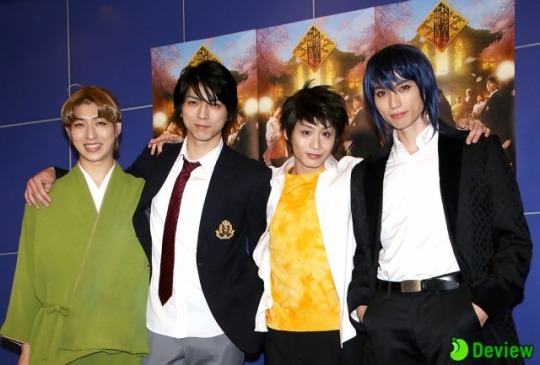
youtube
this stage looks fun i hope there’ll be a stream at some point
Sources :
official site : https://news.youapa-stage.jp/UserArticle/Detail/14
niconico article : https://news.nicovideo.jp/watch/nw4619079
more under the cut
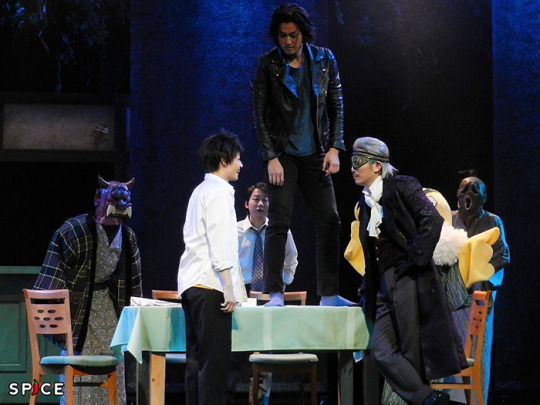
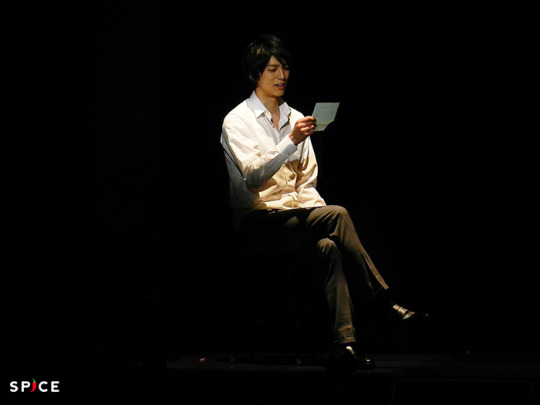
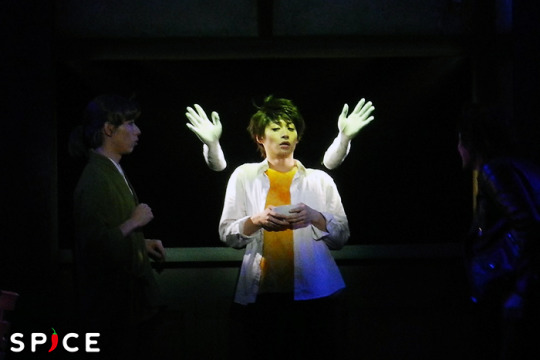
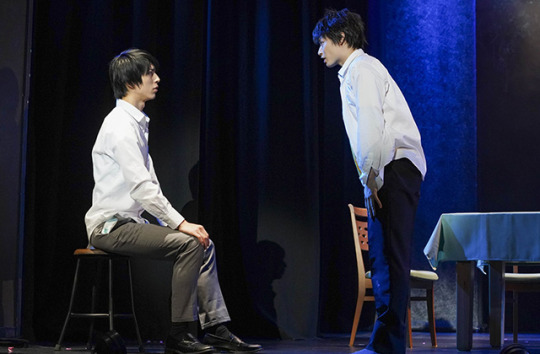
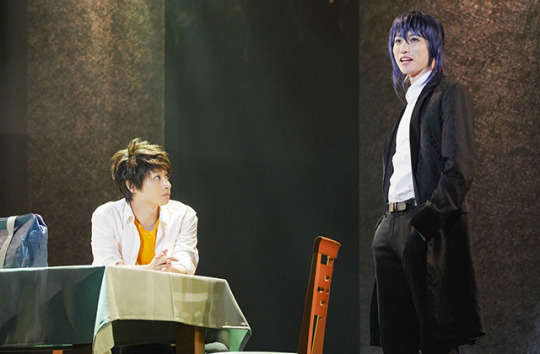
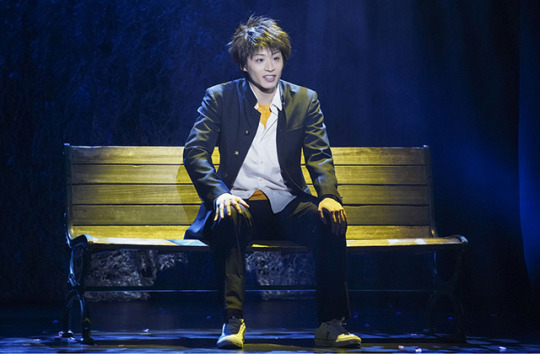
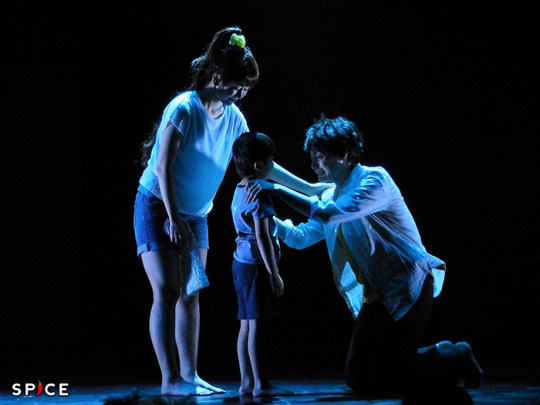
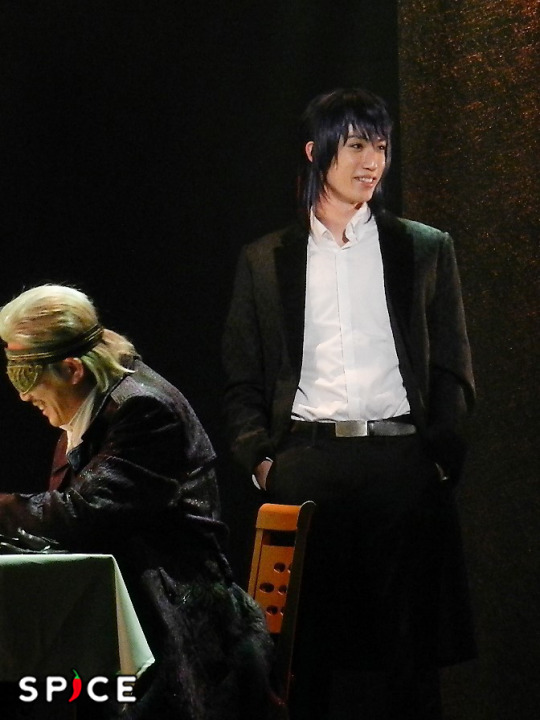
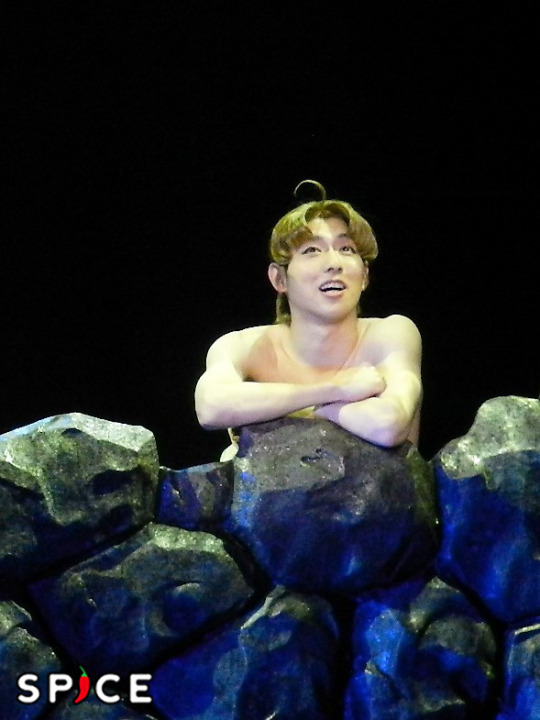
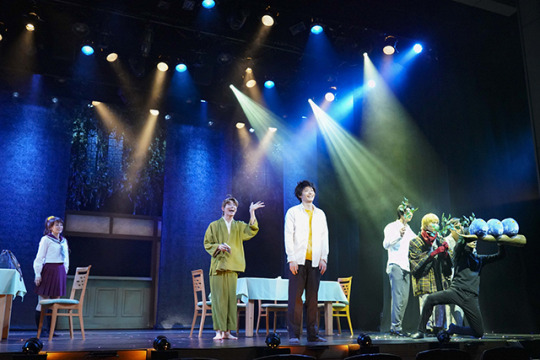
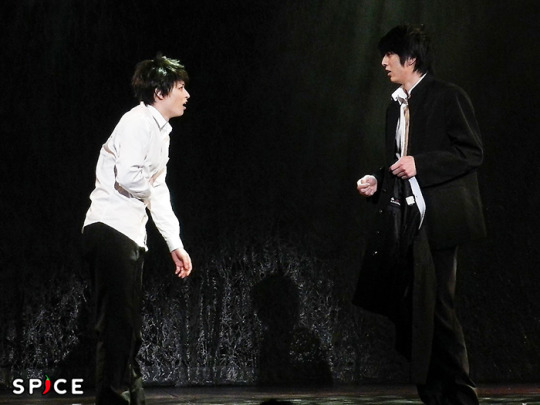
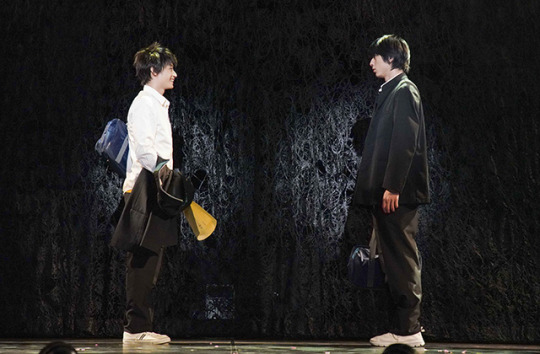
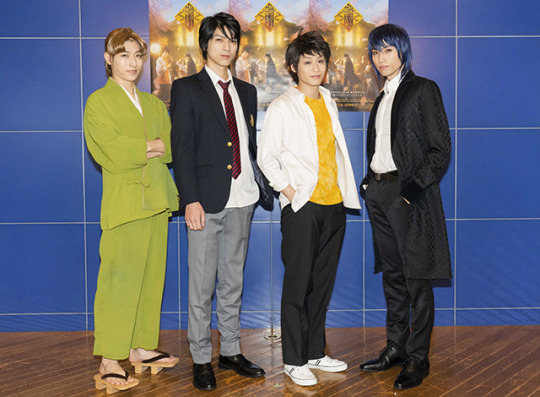
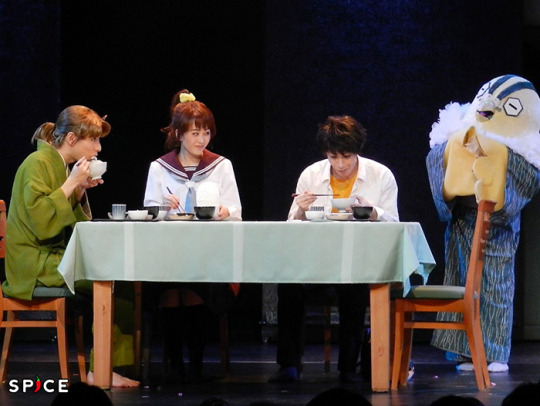
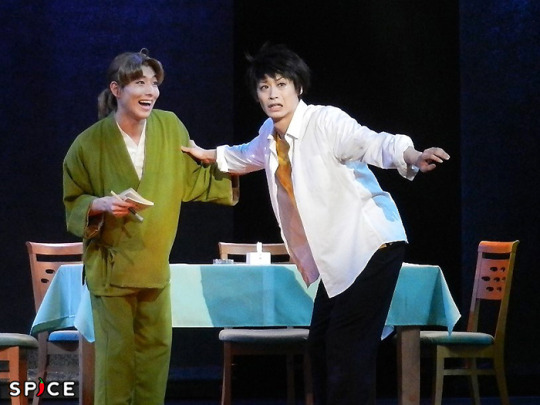
youtube
#youkai apaato no yuuga na nichijou#maeyama takahisa#komatsu junya#saeki ryou#tani yoshiki#sasaki takao#nakamura yukari#aikawa haruki#arai yuu#inomata rei#ishii hideaki#muroi hibiki#mawatari aki#mitsui satoshi#nagata sachi
10 notes
·
View notes
Photo



Natura 1600
ℱ𝓻𝒆𝒆𝒆'𝓼 - 𝓘𝓼𝓱𝓲𝓲 ℋ𝓲𝓭𝒆𝓪𝓴𝓲 ~ ℱ𝓲𝓷𝓪𝓵 ℬ𝓸𝓾𝓽 :: 𝓢𝓹𝒆𝓬𝓲𝓪𝓵 𝓢𝓽𝓪𝓰𝒆 𝓙𝓪𝓹𝓪𝓷 (𝟐𝟎𝟏𝟕)
#999K corp#999k corporation#SSJ#FBSSJ#Final Bout Japan#Final Bout#Special Stage Japan#3LLL#film#natura 1600#drift#freee's#s13#ishii hideaki#Special Stage#999K
593 notes
·
View notes
Photo










Funky Forest: The First Contact 『ナイスの森 THE FIRST CONTACT』 (2006) • Written & Directed by Katsuhito Ishii 石井 克人, Hajime Ishimine 伊志嶺一 and Shunichiro Miki 三木 俊一郎.
#japan film club#funky forest#the first contact#ナイスの森 THE FIRST CONTACT#2006#Katsuhito Ishii#石井 克人#Hajime Ishimine#伊志嶺一#Shunichiro Miki#三木 俊一郎#Tadanobu Asano#浅野 忠信#Susumu Terajima#寺島 進#Rinko Kikuchi#菊地 凛子#Hideaki Anno#庵野 秀明#Ryo Kase#加瀬 亮
66 notes
·
View notes
Photo
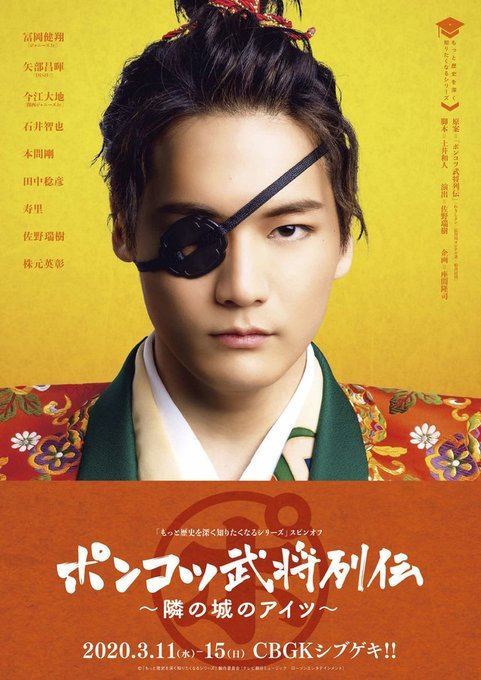
[Pics] ポンコツ武将列伝~隣の城のアイツ~ (ponkotsu bushou retsuden ~tonari no shiro no aitsu~)
main visual ↑↑��� & visuals update under the cut^^
Cast:
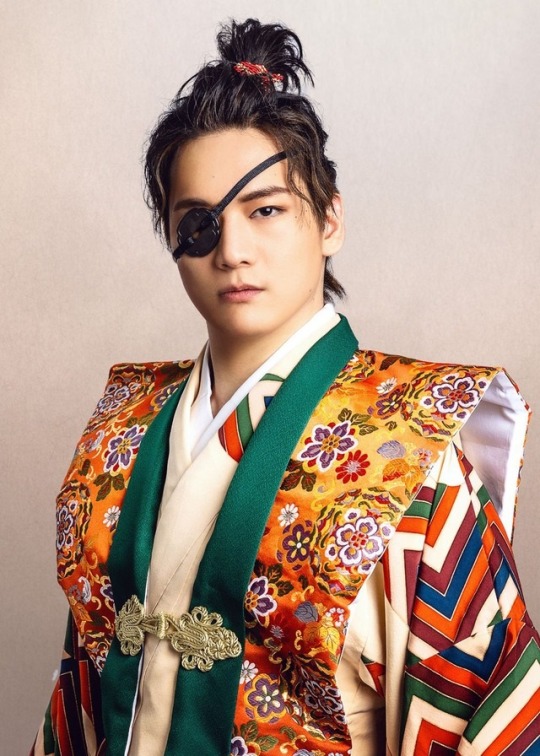
Tomioka Kento
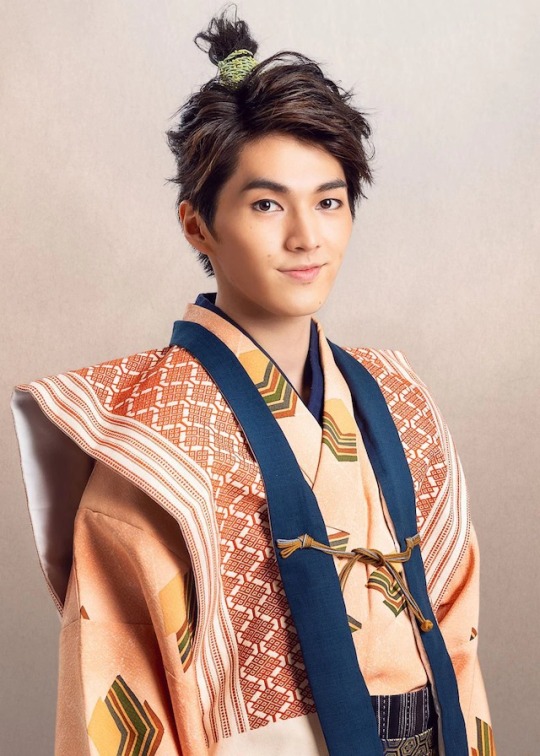
Yabe Masaki
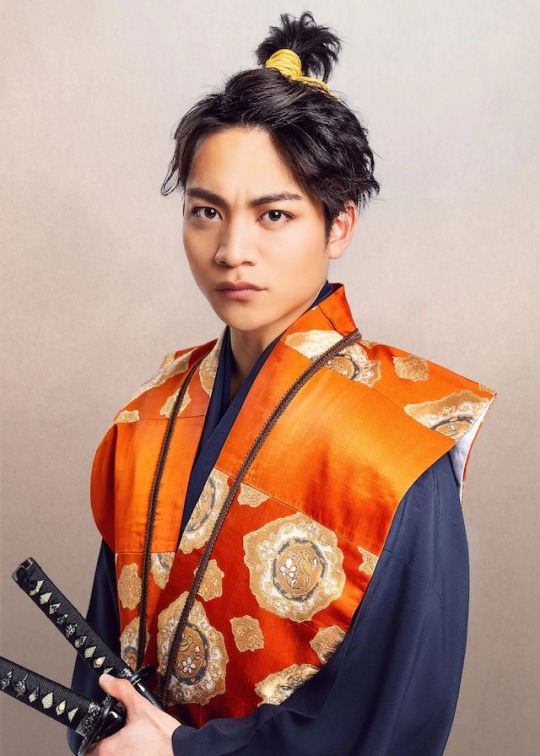
Imae Daichi
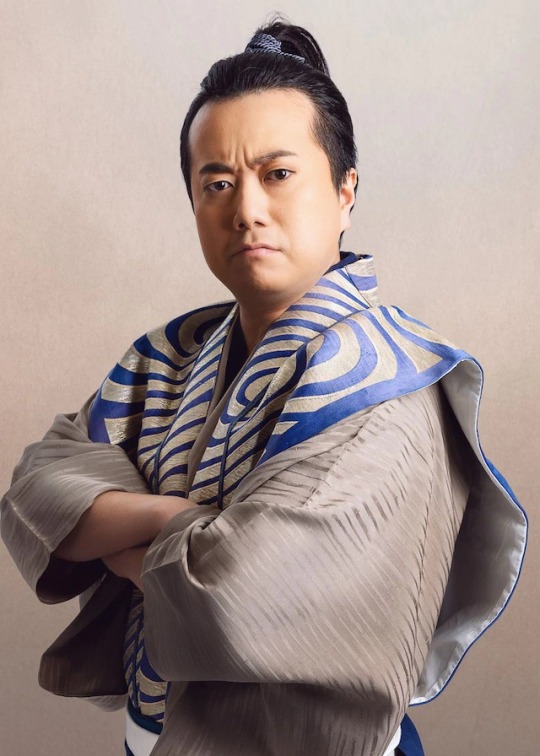
Ishii Tomoya
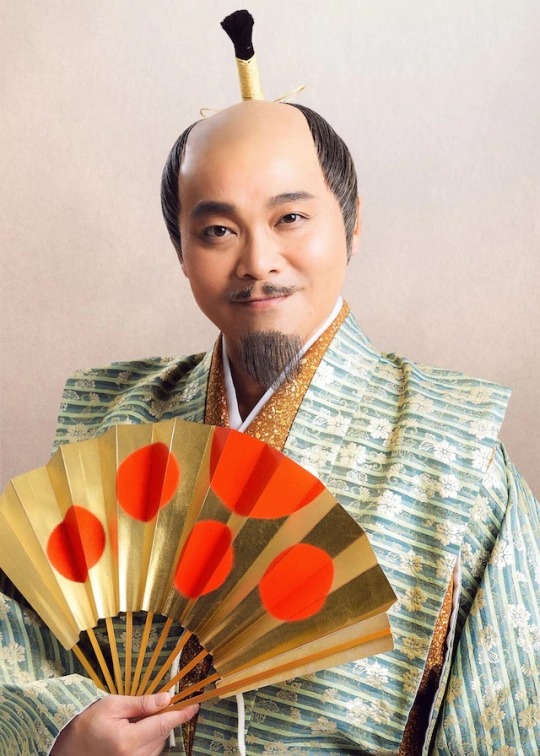
Honma Tsuyoshi
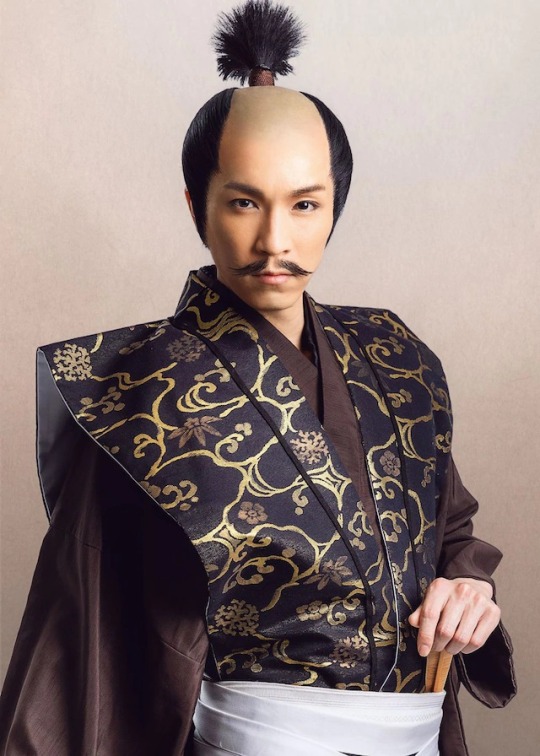
Tanaka Toshihiko
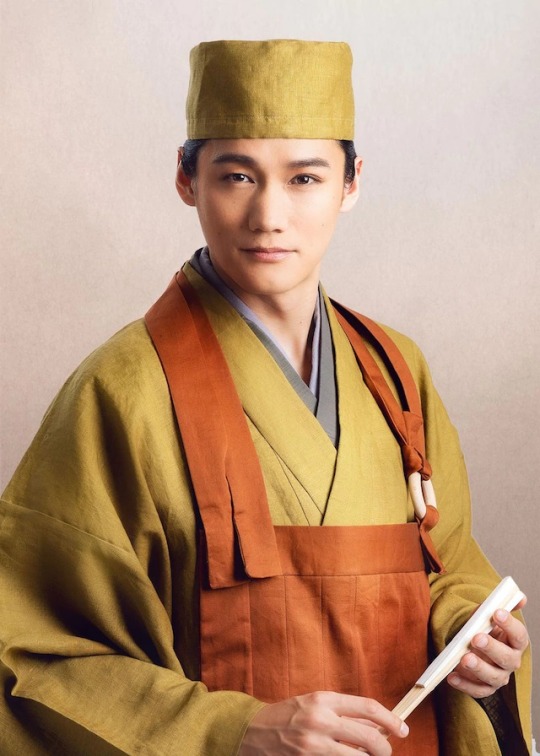
Juri
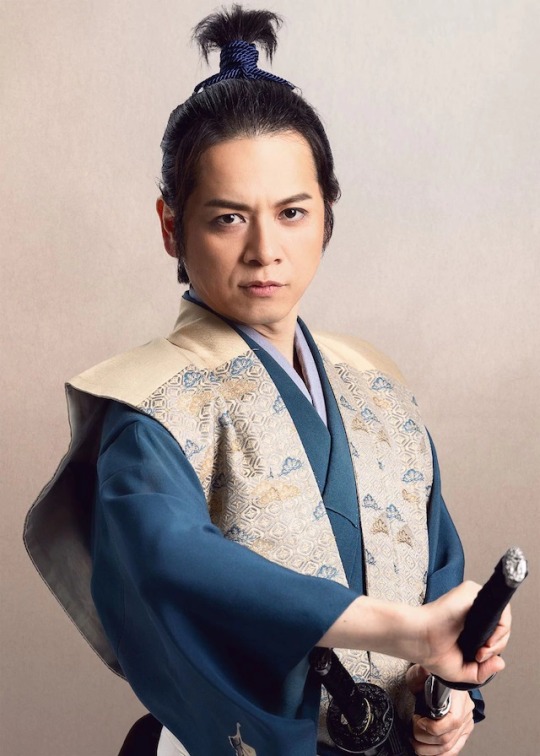
Sano Mizuki
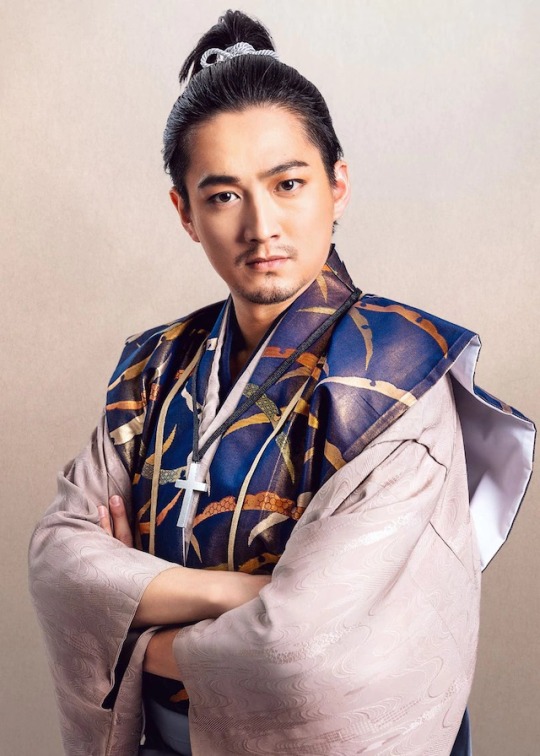
Kabumoto Hideaki
homepage natalie
#ポンコツ武将列伝#ponkotsu bushou retsuden#冨岡健翔#tomioka kento#矢部昌暉#yabe masaki#今江大地#imae daichi#石井智也#ishii tomoya#本間剛#honma tsuyoshi#田中稔彦#tanaka toshihiko#寿里#juri#佐野瑞樹#sano mizuki#株元英彰#kabumoto hideaki
4 notes
·
View notes
Photo



Cha no Aji [The Taste of Tea] Katsuhito Ishii, 2004
#Cha no Aji#japanese cinema#film#movies#the taste of tea#asian cinema#asian movies#cinema#asian film#japanese maple#japanese film#Katsuhito Ishii#hideaki anno#tadanobu asano
1K notes
·
View notes
Photo

There was only one graphic designer on the 1990 PC Engine game Wallaby!!! Usagi no Kuni no Kangaroo Race - Hideaki Ishii / いしい ひであき - and he also handled the cover illustration, in pixel art.
21 notes
·
View notes
Text
Tokusatsu Tuesday 1: Casshern & Funky Forest
It’s been almost a year since I transitioned from streaming videogames to streaming copyrighted materials and getting away with it somehow... is it time to expand? Sure why not: I have no idea if this can be a regular thing, but tonight I’m getting a thing together with @lyravelocity and @mogsk for something new... it’s time to tokupill you fuckers!!!

(we’re not watching this film today, but i can only post the trailers once! so have a guy bouncing a laser with his butt...)
Tokusatsu (特撮) simply means ‘special effects’, but practically it’s come to refer to the tradition of Japanese film and TV that makes heavy use of suit acting and other fancy visual tricks at quite a variety of budgets. That means kaiju (giant monster) films like Godzilla, sentai shows like well, Super Sentai (who Americans may recognise as the source material adapted into Power Rangers), and many other long-running franchises such as Kamen Rider, which is essentially an anthology of standalone series with common elements...
Well, I’m pretty much only dipping my toe into tokusatsu, but what’s notable for me compared to like Western special effects spectacles are 1. the actors actually seem to be having fun! 2. very distinctive aesthetics - for Kamen Rider, that’s a particular, brightly coloured toyetic aesthetic (though reinvented every season), 3. a great deal of creativity in visual design of monsters and such... but that said it’s hard to generalise too much: some are more comedic, some are quite dramatically moving (e.g. Anno’s Shin Godzilla), beyond ‘mostly sci-fi’ it’s a very broad category of thing...
So what have we got tonight?
youtube
Our first feature is a film that is pretty unique, even among tokusatsu, for just how much it leans into presenting a music-videoesque, hyper-processed dystopian landscape, to the point that most of its shots wouldn’t be out of place in a Warhammer 40k sourcebook. I first watched it a couple of years ago with @lyravelocity and I can’t wait to dive back in again...
Casshern (2004), dir. Kazuaki Kiruya, is essentially a grimdark reimagining of the 70s superhero anime Neo-Human Casshern. Like in the anime, it follows a cyborg fighting his father’s creations; unlike the anime, this all takes place in a hyper-industrialised fascist future where the cyborgs were constructed by a genocidal regime, and are presented in a much more sympathetic light: it’s a tragedy, aiming at Shakespeare but with more robot armies and explicit influence of the Russian avant-garde.
I don’t know how Casshern was funded - its budget is surprisingly tiny, just $6 million, and the whole production lasted less than a year, which is wild when just about every shot is a special effects shot involving cg, matte painting, effects layers, extreme colour grading etc.! It did notably have the backing of singer Hikaru Utada of Kingdom Hearts fame; the director was at the time her husband, and directed the majority of her videos. Perhaps that goes some way to explaining how this weird passion project could come into existence...
youtube
Our second pick is courtesy of @mogsk, is Funky Forest (2005) (ナイスの森 THE FIRST CONTACT, Naisu no Mori: The First Contact)! This is, as best as I can discern, a kind of comedy package film. It’s getting in here because of the segments of Cronenberg-inspired physical effects and weird body stuff, but it’s also got some anime, and Hideaki Anno is acting in it (yeah acting???)...
OK, but what’s it actually about? That kind of defies description: essentially an anthology of sketches, which you can get a taste for here:
Ishii must have been feeling a little restrained because this time he decided to let it all hang out. The result is Funky Forest, a completely bizarre mélange of sketch comedy, non-sequitur humor, and freak-out special effects. And dancing, lots and lots of dancing. Needless to say, strange dancing.
The sketches are spread pretty wide, and often connect only tenuously, but certain characters and themes recur (watching Funky Forest is a little like flipping between 5-6 channels at 3 in the morning). There is a framing device, featuring the worst comedy duo ever, all dressed in white like sperm at a formal dance. There are also three brothers who are very unpopular with women. Tadanobu Asano (stretching credibility by asking us to imagine a world in which he is not popular with women) plays Guitar Brother, an amalgam of every loser you ever met who writes sensitive songs for his acoustic guitar. Susumu Terajima (who is actually required by law to appear in every good Japanese movie) plays his even lamer brother, who mimics Noh masks in his spare time. The other brother? A white kid who loves Snickers.
We also spend time with sorta couple Notti and Takefumi, lounging around, playing music and dreaming; feisty little Hataru; and the Babbling Hot Springs Vixens, who tell the most pointless stories in a Rakugo-flavored Japanese so funny that even non-speakers should be able to appreciate the rhythm and flow of it. There are also scenes set in the strangest high school since Cromartie High, the fabled Singles Picnic, and some Bill Plympton-influenced animation. There is an “explanation” of sorts at the end, but the movie is not enhanced by its inclusion any more than it would have been diminished by its absence – like rational thought, it is totally beside the point.
Honestly it sounds like it will be hit and miss but I’m pretty sure the hits will hit hard enough to work, and in any case it’s just kind of fascinatingly chaotic.
I’m going to start at 7pm UK time over at, as usual, twitch.tv/canmom! If this goes well, we might well run more tokusatsu nights - I have a few thoughts about what to include but also I have some very toku-informed girlfriends to help me :3 Anyway, looking forward to seeing you there!
9 notes
·
View notes
Text
URL MUSE PLAYLIST. create a playlist that encompasses your muse using only the letters of your url. ( multi-muse — specify which muse(s) each song makes you think of. ) repost, do not reblog.
D: Dark Sun by Lyn Inaizumi A: After the Battle by Shiro Sagisu R: Religion of Loneliness by Yuu Miyashita K: Komm, süsser Tod by Hideaki Anno & ARIANNE M: Mourning by Keiichi Okabe I: Indra by Susumu Hirasawa S: Stronger by The Score S: Survival on the Street of Insincerity by Yasushi Ishii I: In My Spirit by Shiro Sagisu O: Orphan of Kos by Tsukasa Saitoh N: Night Unfurls by Ryan Amon A: Absolute Configuration by Yuki Kaijura R: Red Right Hand by Pete Yorn Y: Yoruwa Honoka by EVE
2 notes
·
View notes
Text
these are the jp directors of weird (live-action) movies i’m interested in:
takashi miike
sion sono
shin’ya tsukamoto
shuji terayama
seijun suzuki
nobuhiko obayashi
sogo ishii (aka gakuryu ishii)
and also primarily-known-for-anime directors Mamoru Oshii and Hideaki Anno have done significant amounts of live-action work
1 note
·
View note
Text
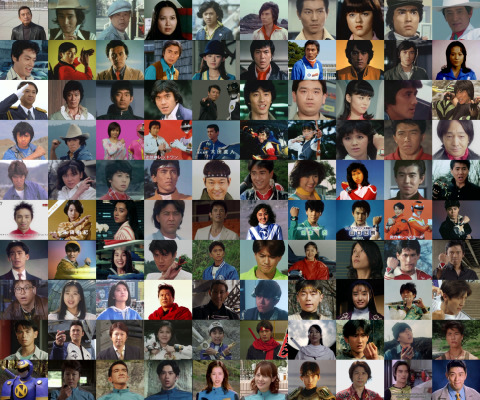
Status Post #8045: Super Sentai 1-100
Row 1 - Goranger [Akaranger (Red): Tsuyoshi Kaijo (Naoya Makoto), Aoranger (Blue): Akira Shimnei (Hiroshi Miyauchi), Kiranger (Yellow): Daita Oiwa (Baku Hatakeyama), Momoranger (Pink): Peggy Matsuyama (Lisa Komaki) and Midoranger (Green): Kenji Asuka (Yukio Itou)] and JAKQ [Spade Ace (Red): Goro Sakurai (Yoshitaka Tanba), Dia Jack (Blue): Ryu Higashi (Tairayama Itou), Heart Queen (Pink): Karen Mizuki (Mitchi Love), Clover King (Green): Bunta Daichi (Yuusuke Kazato) and Big One (White): Sokichi Banba (Hiroshi Miyauchi)]
Row 2 - Battle Fever J [Battle Japan (Red): Masao Den (Hironori Tanioka), Battle France (Blue): Kyousuke Shida (Yuuhei Kurachi), Battle Cossack (Orange): Makoto Jin (Naoya Ban), Battle Kenya (Black): Shirou Akebono (Kenji Ohba) and Miss America (Pink): Maria Nagisa (Naomi Hagi)] and Denjiman [Denji Red: Ippei Akagi (Shinichi Yuuki), Denji Blue: Daigoro Oume (Kenji Ohba), Denji Yellow: Jun Kiyama (Eiichi Tsuyama), Denji Green: Tatsuya Midorikawa (Naoya Uchida) and Denji Pink: Akira Momoi (Akira Koizumi)]
Row 3 - Sun Vulcan [Vul Eagle (Red): Takayuki Hiba (Takayuki Godai), Vul Shark (Blue): Kin'ya Samejima (Kin'ya Sugi) and Vul Panther (Yellow): Asao Hyou (Asao Kobayashi)], Goggle-V [Goggle Red: Kenichi Akama (Ryouji Akagi), Goggle Black: Kanpei Kuroda (Jyunichi Haruta), Goggle Blue: Saburo Aoyama (Shigeki Ishii), Goggle Yellow: Futoshi Kijima (Sanpei Godai) and Goggle Pink: Miki Momozono (Megumi Ogawa)] and Dynaman (Red and Black) [Dyna Red: Hokuto Dan (Satoshi Okita) and Dyna Black: Ryuu Hoshikawa (Jyunchi Haruta)]
Row 4 - Dynaman (Blue, Yellow and Pink) [Dyna Blue: Yousuke Shima (Kouji Unogi), Dyna Yellow: Kousaku Nangou (Yuu Tokita) and Dyna Pink: Rei Tachibana (Sayoko Hagiwara)], Bioman [Red One: Shirou Gou (Ryosuke Sakamoto), Green Two: Shingo Takasugi (Naoto Ota), Blue Three: Ryuuta Nanbara (Akita Osuga), Yellow Four: Jun Yabuki (Sumiko Tanaka) and Pink Five: Hikaru Katsuragi (Michiko Makino)] and Changeman (Red and Black) [Change Dragon (Red): Hiryu Tsurugi (Haruki Hamada) and Change Griffin (Black): Shou Hayate (Kazuoki Takahashi)]
Row 5 - Changeman (Blue, White and Pink) [Change Pegasus (Blue): Yuma Ozora (Shiro Izumi), Change Mermaid (White): Sayaka Nagisa (Hiroko Nishimoto) and Change Phoenix (Pink): Mai Tsubasa (Mai Ooishi)], Flashman [Red Flash: Jin (Touta Tarumi), Green Flash: Dai (Kihachiro Uemura), Blue Flash: Bun (Yasuhiro Ishiwata), Yellow Flash: Sara Tokimura (Youko Nakamura) and Pink Flash: Lou (Mayumi Yoshida)] and Maskman (Red and Black) [Red Mask: Takeru (Ryousuke Kaizu) and Black Mask: Kenta (Koichi Kusakari)]
Row 6 - Maskman (Blue, Yellow and Pink) [Blue Mask: Akira (Issei Hirota), Yellow Mask: Haruka (Yuki Nagata) and Pink Mask: Momoko (Kanako Maeda)], Liveman [Red Falcon: Yuusuke Amamiya (Daisuke Shima), Yellow Lion: Joh Ohara (Kazuhiko Nishimura), Blue Dolphin: Megumi Misaki (Megumi Mori), Black Bison: Tetsuya Yano (Seirou Yamaguchi) and Green Sai: Jun'ichi Aikawa (Jin Kawamoto)] and Turboranger (Red and Black) [Red Turbo: Riki Honoo (Kenta Satou) and Black Turbo: Daichi Yamagata (Fumiaki Ganaha)]
Row 7 - Turboranger (Blue, Yellow and Pink) [Blue Turbo: Youhei Hama (Keiya Asakura), Yellow Turbo: Shunsuke Hino (Junichiro Katagiri) and Pink Turbo: Haruna Morikawa (Yoshiko Iwaya)], Fiveman [Five Red: Gaku Hoshikawa (Toshiya Fuji), Five Blue: Ken Hoshikawa (Kei Sindachiya), Five Black: Fumiya Hoshikawa (Ryohei Kobayashi), Five Pink: Kazumi Hoshikawa (Kazuko Miyata) and Five Yellow: Remi Hoshikawa (Ryo Narushima)] and Jetman (Red and Black) [Red Hawk: Ryu Tendo (Kotaro Tanaka) and Black Condor: Gai Yuki (Toshihide Wakamatsu)]
Row 8 - Jetman (Yellow, White and Blue) [Yellow Owl: Raita Ooishi (Tomihisa Naruse), White Swan: Kaori Rokumeikan (Rika Kishida) and Blue Swallow: Ako Hayasaka (Sayuri Uchida)], Zyuranger [Tyranno Ranger (Red): Geki (Yuta Mochizuki), Mammoth Ranger (Black): Goushi (Seiju Umon), Tricera Ranger (Blue): Dan (Hideki Fujiwara), Tiger Ranger (Yellow): Boi (Takumi Hashimoto), Ptera Ranger (Pink): Mei (Reiko Chiba) and Dragon Ranger (Green): Burai (Shiro Izumi)] and Dairanger (Red) [Ryuu Ranger (Red): Ryo (Keiichi Wada)]
Row 9 - Dairanger (Green, Blue, Yellow, Pink and White) [Shishi Ranger (Green): Daigo (Tatsuya Nomi), Tenma Ranger (Blue): Shoji (Ei Hamura), Kirin Ranger (Yellow): Kazu (Keisuke Tsuchiya), Houou Ranger (Pink): Lin (Natsuki Takahashi) and Kiba Ranger (White): Kou (Hisashi Sakai)] and Kakuranger [Ninja Red: Sasuke (Teruaki Ogawa), Ninja White: Tsuruhime (Satomi Hirose), Ninja Blue: Saizou (Hiroshi Tsuchida), Ninja Yellow: Seikai (Shu Kawai) and Ninja Black: Jiraiya (Kane Kosugi)]
Row 10 - Kakuranger (Navy) [Extra Hero (Navy): Ninjaman (Hideaki Kusaka, voiced by Kazuki Yao)], Ohranger [Oh Red: Goro Hoshino (Masaru Shishido), Oh Green: Shouhei Yokkaichi (Kunio Masaoka), Oh Blue: Yuji Mita (Masashi Goda), Oh Yellow: Juri Nijou (Ayumi Aso), Oh Pink: Momo Maruo (Tamao Sato) and King Ranger (Black): Riki (Shoji Yamaguchi)] and Carranger (Red, Blue and Green) [Red Racer: Kyosuke Jinnai (Yuji Kishi), Blue Racer: Naoki Domon (Yoshihiro Masujima) and Green Racer: Minoru Uesugi (Yoshihiro Fukuda)]
4 notes
·
View notes
Photo










Funky Forest : The First Contact ナイスの森 : The First Contact Katsuhito Ishii, Hajime Ishimine & Shunichiro Miki, 2006
3 notes
·
View notes
Photo

[Announcement] ポンコツ武将列伝~隣の城のアイツ~ (ponkotsu bushou retsuden ~tonari no shiro no aitsu~)
the show will be running from March 11th, 2020 to March 15th, 2020 (Tokyo) @ CBGKシブゲキ!! (CBGKShibugeki!!)
Cast:
Tomioka Kento Yabe Masaki Imae Daichi Ishii Tomoya Honma Tsuyoshi Tanaka Toshihiko Juri Sano Mizuki Kabumoto Hideaki
homepage natalie
#ポンコツ武将列伝#ponkotsu bushou retsuden#冨岡健翔#tomioka kento#矢部昌暉#yabe masaki#今江大地#imae daichi#石井智也#ishii tomoya#本間剛#honma tsuyoshi#田中稔彦#tanaka toshihiko#寿里#juri#佐野瑞樹#sano mizuki#株元英彰#kabumoto hideaki
3 notes
·
View notes
Photo




Cha no Aji [The Taste of Tea] Katsuhito Ishii, 2004
#Cha no Aji#The Taste of Tea#cinema#movies#film#japanese cinema#japanese movies#japanese film#hideaki anno#asian movies#asian cinema#Asian#tadanobu asano#Katsuhito Ishii
54 notes
·
View notes
Text
Security and Resilience of Control Systems: Theory and Applications
Security and Resilience of Control Systems: Theory and Applications
Security and Resilience of Control Systems: Theory and Applications Hideaki Ishii, Quanyan Zhu This book comprises a set of chapters that introduce various topics pertinent to novel approaches towards enhancing cyber-physical measures for increased security and resilience levels in control systems. The unifying theme of these approaches lies in the utilization of knowledge and models of the…

View On WordPress
0 notes